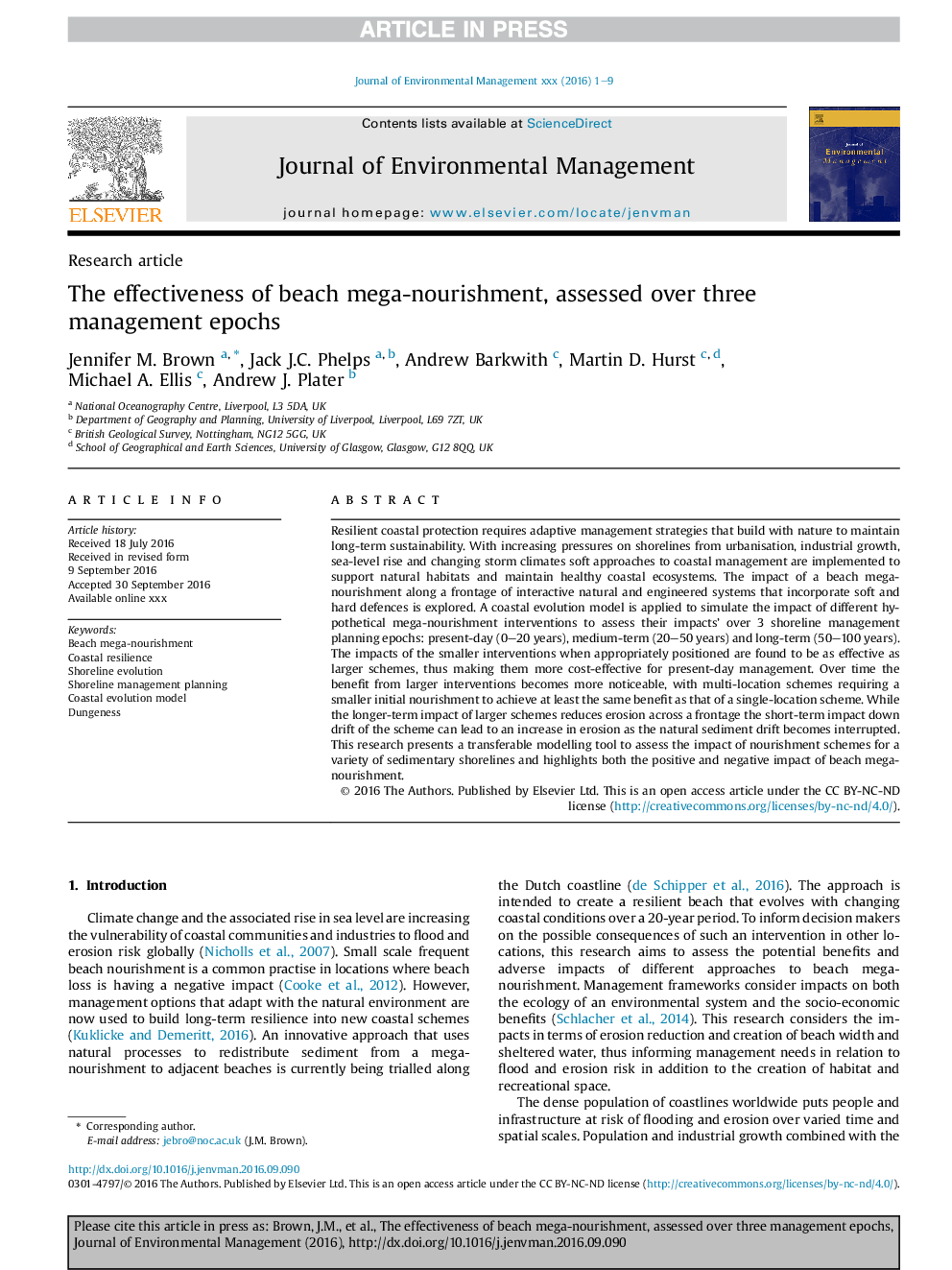| Article ID | Journal | Published Year | Pages | File Type |
|---|---|---|---|---|
| 5117105 | Journal of Environmental Management | 2016 | 9 Pages |
Abstract
Resilient coastal protection requires adaptive management strategies that build with nature to maintain long-term sustainability. With increasing pressures on shorelines from urbanisation, industrial growth, sea-level rise and changing storm climates soft approaches to coastal management are implemented to support natural habitats and maintain healthy coastal ecosystems. The impact of a beach mega-nourishment along a frontage of interactive natural and engineered systems that incorporate soft and hard defences is explored. A coastal evolution model is applied to simulate the impact of different hypothetical mega-nourishment interventions to assess their impacts' over 3 shoreline management planning epochs: present-day (0-20 years), medium-term (20-50 years) and long-term (50-100 years). The impacts of the smaller interventions when appropriately positioned are found to be as effective as larger schemes, thus making them more cost-effective for present-day management. Over time the benefit from larger interventions becomes more noticeable, with multi-location schemes requiring a smaller initial nourishment to achieve at least the same benefit as that of a single-location scheme. While the longer-term impact of larger schemes reduces erosion across a frontage the short-term impact down drift of the scheme can lead to an increase in erosion as the natural sediment drift becomes interrupted. This research presents a transferable modelling tool to assess the impact of nourishment schemes for a variety of sedimentary shorelines and highlights both the positive and negative impact of beach mega-nourishment.
Related Topics
Physical Sciences and Engineering
Energy
Renewable Energy, Sustainability and the Environment
Authors
Jennifer M. Brown, Jack J.C. Phelps, Andrew Barkwith, Martin D. Hurst, Michael A. Ellis, Andrew J. Plater,
